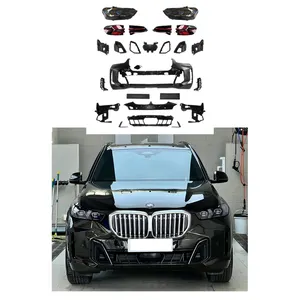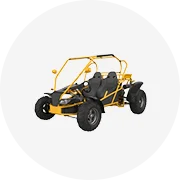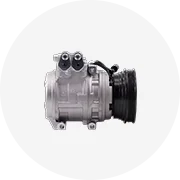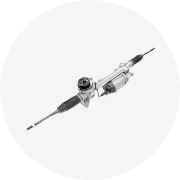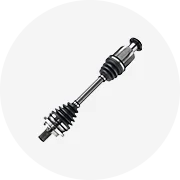Phổ biến trong ngành của bạn





Zg vòng vuông hình chữ nhật điều khiển LED Bảng điều chỉnh ánh sáng cho nhiếp ảnh chiếu sáng
59.460 ₫ - 85.886 ₫
Đơn hàng tối thiểu: 50 Cái







2700K 3000K 3500K 4000K 5000K 3 4 6 8 Inch LED Đèn Thay Đổi Độ Sáng Văn Phòng Có Thể Điều Chỉnh Downlight Nồi Đèn Bảng Điều Chỉnh Ánh Sáng Trần
7.115 ₫ - 78.771 ₫
Đơn hàng tối thiểu: 2 Cái





Xrzlux lõm trimless Trần Spotlight 10W vuông LED Downlight ETL cri97 có thể điều chỉnh COB LED Downlight khách sạn nhà chiếu sáng
Sẵn sàng vận chuyển
744.513 ₫ - 952.875 ₫
Đơn hàng tối thiểu: 2 Cái
Vận chuyển mỗi chiếc: 343.035 ₫







Xrzlux LED Hình Chữ Nhật Lõm Nhôm Spotlight 5/10 Đầu Lõm Tuyến Tính Ánh Sáng AC110-220V LED Trần Đèn Chiếu Sáng Trong Nhà
Sẵn sàng vận chuyển
609.586 ₫ - 1.017.417 ₫
Đơn hàng tối thiểu: 2 Cái
Vận chuyển mỗi chiếc: 469.069 ₫







Độ sáng cao Led Downlight recessed chiếu sáng 4 inch 5cct Trần nồi ánh sáng đèn 100-120V Vòng bảng điều chỉnh LED Spotlight
50.820 ₫ - 121.968 ₫
Đơn hàng tối thiểu: 10 Cái







ENCORE Đèn Trần Led Ảo Nhân Tạo Điều Khiển Wifi Tại Nhà Thông Minh Chăm Sóc Sức Khỏe Đèn Trần Trời Xanh Dương Bảng Ánh Sáng Ban Ngày Tự Nhiên
1.158.696 ₫ - 1.646.568 ₫
Đơn hàng tối thiểu: 1 Cái






Cao lumens 80lm 12W 5000K ánh sáng ban ngày vòng lõm nồi siêu mỏng nhôm Led thương mại Bảng điều chỉnh ánh sáng
19.058 ₫ - 22.107 ₫
Đơn hàng tối thiểu: 3000 Cái
Vận chuyển mỗi chiếc: 50.312 ₫






Siêu mỏng ánh sáng ban ngày thay đổi độ sáng có thể giết người Downlight 4 "6" 8 "LED Đèn trần đèn trang trí Bảng điều chỉnh đèn Led trần ánh sáng
119.427 ₫ - 144.837 ₫
Đơn hàng tối thiểu: 10 Cái






Ánh sáng ban ngày 5000K Dimmable LED recessed Trần Vuông phẳng thương mại mỏng bảng điều chỉnh đèn cho văn phòng
185.493 ₫ - 190.575 ₫
Đơn hàng tối thiểu: 2 Cái






Đèn Trần Phẳng LED 2x4FT Đèn Trần Thả Ánh Sáng Ban Ngày 5000K Có Thể Điều Chỉnh Độ Sáng 0-10V 4000LM 40W, Đèn LED Chiếu Sáng Ngược
351.929 ₫ - 411.642 ₫
Đơn hàng tối thiểu: 1 Cái






DST Đèn Trần Led Ảo Nhân Tạo Điều Khiển Wifi Tại Nhà Thông Minh Chăm Sóc Sức Khỏe Đèn Trần Trời Xanh Dương Bảng Ánh Sáng Ban Ngày Tự Nhiên
4.065.346 ₫ - 4.827.646 ₫
Đơn hàng tối thiểu: 50 Cái
- 10%






Siêu mỏng ánh sáng ban ngày thay đổi độ sáng có thể giết người Downlight 4 "6" LED Đèn trần đèn trang trí Bảng điều chỉnh đèn Led trần ánh sáng
Sẵn sàng vận chuyển
123.493 ₫ - 125.780 ₫
Đơn hàng tối thiểu: 2 Cái
Vận chuyển mỗi chiếc: 244.699 ₫
Các tìm kiếm liên quan:






Nhà Máy thâm quyến 120LM/W 150lm/W ánh sáng ban ngày màu trắng 5000K dẫn ánh sáng phẳng
965.580 ₫ - 1.016.400 ₫
Đơn hàng tối thiểu: 1000 Cái
Vận chuyển mỗi chiếc: 999.884 ₫






2X4 LED Phẳng Bảng Điều Chỉnh Ánh Sáng 5000K Ánh Sáng Ban Ngày Màu Trắng Thả Trần Bảng Điều Khiển 48W Ánh Sáng Recessed Edge-Lit Lịch Thi Đấu
151.190 ₫ - 198.198 ₫
Đơn hàng tối thiểu: 500 Cái






Giá tốt DOB downlights phẳng ánh sáng ban ngày 3W 6W 9W 12W 18W 24W Vòng treo lõm Silm IP54 tuôn ra Trần LED bảng điều chỉnh ánh sáng
22.869 ₫ - 40.656 ₫
Đơn hàng tối thiểu: 1000 Cái






T8 Led Ống 4000K 5000K 6000K Ánh Sáng Ban Ngày V Shape Led Cooler Ánh Sáng 8Ft Led Ống Ánh Sáng Với Đôi Dòng Led
50.820 ₫ - 508.200 ₫
Đơn hàng tối thiểu: 100 Cái






Siêu mỏng ánh sáng ban ngày thay đổi độ sáng Led Slim Downlight 4 inch 3cct 5cct lựa chọn USA canda Chứng Khoán LED Đèn Bảng điều chỉnh ánh sáng
80.042 ₫ - 143.567 ₫
Đơn hàng tối thiểu: 2 Cái






Lumens cao 80lm 15W 24W 32W 48W 5000K ánh sáng ban ngày tròn lõm nồi siêu mỏng nhôm Led bảng điều khiển thương mại
509 ₫ - 13.468 ₫
Đơn hàng tối thiểu: 10000 Cái
Vận chuyển mỗi chiếc: 10.419 ₫

Đèn Led Dạng Bảng Bảng Màu Trắng Ánh Sáng Ban Ngày, Đèn LED Trần Dạng Thả Phẳng Bảng Điều Khiển Đèn Led Chiếu Sáng Cạnh Lõm
7.623 ₫ - 76.230 ₫
Đơn hàng tối thiểu: 100 Cái






Giao hàng nhanh 12 inch trang trí không nhấp nháy ánh sáng ban ngày 4000K phòng tắm nhỏ LED hiện đại ánh sáng Trần Vòng
127.050 ₫ - 320.166 ₫
Đơn hàng tối thiểu: 2 Cái






ETL 6 Inch Flush Mount LED Disk Light 5000K Ánh Sáng Ban Ngày Dimmable Hardwire 4 "Hoặc 6" Hộp Nối Chìm Trang Bị Thêm Trần Lịch Thi Đấu
83.853 ₫ - 98.591 ₫
Đơn hàng tối thiểu: 500 Cái
Vận chuyển mỗi chiếc: 59.714 ₫






Tl6532 1004 mét Led tuyến tính Trunking hệ thống treo lõm tuyến tính ánh sáng ánh sáng ban ngày recessed chiếu sáng
495.495 ₫ - 553.938 ₫
Đơn hàng tối thiểu: 10 Mét






Led nhà máy Trung Sơn ánh sáng ban ngày recessed Vòng Dimmable 2835smd khuếch tán phản ánh Bảng điều chỉnh ánh sáng LED
21.091 ₫ - 102.403 ₫
Đơn hàng tối thiểu: 3000 Cái






Đèn Trần Phẳng LED 2X2Ft Ánh Sáng Ban Ngày Giảm Ánh Sáng Ban Ngày 6000K Vuông CE 36W 3600lm
99.608 ₫ - 102.657 ₫
Đơn hàng tối thiểu: 100 Cái






2700K 3000K 4000K 6000K 2x4 Trần phẳng 60x120 thương mại Trần 6500K ánh sáng ban ngày dẫn Khung bảng điều khiển ánh sáng
152.460 ₫ - 228.690 ₫
Đơn hàng tối thiểu: 1 Cái






Thông minh Bảng điều chỉnh ánh sáng 60x60 ZigBee BLE PIR/ánh sáng ban ngày cảm biến lõm LED phẳng Bảng điều chỉnh ánh sáng cho văn phòng cửa hàng
495.495 ₫ - 520.905 ₫
Đơn hàng tối thiểu: 2 Cái
Vận chuyển mỗi chiếc: 602.980 ₫






Lyzm Lumens Cao 80lm 9W 12W 18W 24W Ánh Sáng Ban ngày Vòng Lõm Nồi Siêu Mỏng Nhôm LED Thương Mại Bảng Điều Chỉnh Ánh Sáng
254.100 ₫ - 508.200 ₫
Đơn hàng tối thiểu: 2 Cái
Vận chuyển mỗi chiếc: 276.461 ₫






6 Inch Slim Led Chiếu Sáng Chìm Với Hộp Nối 5000K Ánh Sáng Ban Ngày Có Thể Xuống Đèn Có Thể Thay Đổi Ánh Sáng Led Tròn
Sẵn sàng vận chuyển
25.156 ₫ - 32.779 ₫
Đơn hàng tối thiểu: 10 Cái
Vận chuyển mỗi chiếc: 137.214 ₫






Kinh tế ánh sáng trắng có thể điều chỉnh LED bảng điều chỉnh ánh sáng recessed 8 Wát trần ánh sáng ban ngày Vòng cho khu dân cư
22.869 ₫
Đơn hàng tối thiểu: 500 Cái

Đèn Led Thả Trần 2X4 75W 7800lm 5000K Ánh Sáng Ban Ngày Trắng 0-10V
254.100 ₫ - 1.778.700 ₫
Đơn hàng tối thiểu: 1 Cái






Đèn Trần LED Âm Trần Siêu Mỏng 6 Inch Được Chứng Nhận Ánh Sáng Ban Ngày Energy Star Độ Sáng Cao 5000K
63.017 ₫ - 123.239 ₫
Đơn hàng tối thiểu: 2 Cái
Vận chuyển mỗi chiếc: 243.174 ₫




Hot bán nhựa Đức tiêu chuẩn thay đổi độ sáng bề mặt được gắn IP65 LED 4 inch LED ánh sáng ban ngày đèn lõm LED trần Bảng điều chỉnh ánh sáng
87.411 ₫ - 214.461 ₫
Đơn hàng tối thiểu: 2 Cái






Đèn Trần Trần Led Ảo Đèn Trần Trần Bầu Trời Xanh Dương Ánh Nắng Mặt Trời Ánh Sáng Ban Ngày Tự Nhiên Âm Tiết Sinh Học Lõm Nhân Tạo
2.185.260 ₫ - 11.434.500 ₫
Đơn hàng tối thiểu: 2 Cái






Nhà thông minh Wifi điều khiển nhân tạo ảo LED Skylight ánh sáng ban ngày tự nhiên bảng điều chỉnh màu xanh bầu trời ánh sáng Trần
1.270.500 ₫ - 2.541.000 ₫
Đơn hàng tối thiểu: 2 Cái
Vận chuyển mỗi chiếc: 11.798.626 ₫






Led Lõm Mỏng Nồi Ánh Sáng 3 Inch 6W 420lm Màu Sắc Có Thể Điều Chỉnh 2700K Để 6500K Ánh Sáng Ban Ngày Trần Xuống Ánh Sáng
58.443 ₫ - 127.050 ₫
Đơn hàng tối thiểu: 100 Cái
Vận chuyển mỗi chiếc: 865.211 ₫






Led trần ánh sáng lõm lưới ánh sáng lịch thi đấu 40W 4000K ánh sáng ban ngày siêu sáng backlit ánh sáng Trần
254.100 ₫ - 304.920 ₫
Đơn hàng tối thiểu: 500 Cái






2x2ft 4000K lõm vuông trần ánh sáng ban ngày Dali Dimmable 40W 4800LM phẳng Backlit lịch thi đấu LED phẳng bảng điều chỉnh đèn
266.805 ₫ - 292.215 ₫
Đơn hàng tối thiểu: 1000 Cái
Vận chuyển mỗi chiếc: 3.490.318 ₫






Bán Sỉ Đèn Chiếu Sáng Âm Trần Led Ánh Sáng Ban Ngày 6500K Có Thể Điều Chỉnh Độ Sáng 15W 6 Inch 1200lm Kèm Hộp Nối
92.747 ₫ - 146.108 ₫
Đơn hàng tối thiểu: 300 Cái






2024 ánh sáng ban ngày 3000K 6500k thông minh dẫn Dimmable phẳng ánh sáng cho chiếu sáng nhà văn phòng
215.985 ₫ - 241.395 ₫
Đơn hàng tối thiểu: 1000 Cái
Các danh mục hàng đầu
Giới thiệu về đèn led ánh sáng ban ngày
Với sự gia tăng số vụ tai nạn trên toàn cầu, đèn led ánh sáng ban ngày. rất cần thiết trong việc đảm bảo an toàn công cộng bằng cách đảm bảo giảm thiểu tai nạn giao thông liên quan đến xe buýt. Alibaba.com cung cấp nhiều loại đèn led ánh sáng ban ngày. để đảm bảo an toàn cho những người tham gia giao thông khác, đặc biệt là học sinh. Các sản phẩm có sẵn cho các mục đích khác nhau, chẳng hạn như chiếu sáng bên ngoài, chiếu sáng bên trong và chiếu sáng mái nhà. Mỗi mặt hàng được thiết kế để đáp ứng mục đích một cách rõ ràng và phát huy vai trò của nó một cách hiệu quả.
Trước khi mua đèn led ánh sáng ban ngày, người mua nên tập trung vào các thông số kỹ thuật, chức năng của xe buýt và ứng dụng khác nhau. Chúng có nhiều kích cỡ, hình dạng, màu sắc và kiểu dáng, nhưng chúng đóng các vai trò khác nhau. Vì vậy, khách hàng nên hiểu những yếu tố này để đảm bảo xe buýt truyền đạt thông tin chính xác đến những người tham gia giao thông khác và hành khách. Người mua cũng phải đảm bảo rằng sản phẩm của họ tuân thủ các tiêu chuẩn giao thông và các biện pháp an toàn tùy thuộc vào quốc gia của họ.
Có nhiều loại, kích thước và hình dạng khác nhau của đèn led ánh sáng ban ngày. trên alibaba.com. Nền tảng đảm bảo tất cả chúng đều có sẵn để đáp ứng nhu cầu của người mua. Người mua có thể chọn sản phẩm từ rất nhiều loại được hiển thị trên trang web. Mỗi mặt hàng đều có mô tả và thông số kỹ thuật rõ ràng để giúp người tiêu dùng lựa chọn và tiết kiệm thời gian.
Alibaba.com cung cấp các sản phẩm chính hãng, xác thực với mức giá phù hợp túi tiền. Nó cung cấp đèn led ánh sáng ban ngày tuyệt vời. để đáp ứng ngân sách của người tiêu dùng. Trước khi lựa chọn sản phẩm, khách hàng có cơ hội cuộn qua cơ sở dữ liệu của sản phẩm và chọn sản phẩm đáp ứng sở thích của họ.
Trước khi mua đèn led ánh sáng ban ngày, người mua nên tập trung vào các thông số kỹ thuật, chức năng của xe buýt và ứng dụng khác nhau. Chúng có nhiều kích cỡ, hình dạng, màu sắc và kiểu dáng, nhưng chúng đóng các vai trò khác nhau. Vì vậy, khách hàng nên hiểu những yếu tố này để đảm bảo xe buýt truyền đạt thông tin chính xác đến những người tham gia giao thông khác và hành khách. Người mua cũng phải đảm bảo rằng sản phẩm của họ tuân thủ các tiêu chuẩn giao thông và các biện pháp an toàn tùy thuộc vào quốc gia của họ.
Có nhiều loại, kích thước và hình dạng khác nhau của đèn led ánh sáng ban ngày. trên alibaba.com. Nền tảng đảm bảo tất cả chúng đều có sẵn để đáp ứng nhu cầu của người mua. Người mua có thể chọn sản phẩm từ rất nhiều loại được hiển thị trên trang web. Mỗi mặt hàng đều có mô tả và thông số kỹ thuật rõ ràng để giúp người tiêu dùng lựa chọn và tiết kiệm thời gian.
Alibaba.com cung cấp các sản phẩm chính hãng, xác thực với mức giá phù hợp túi tiền. Nó cung cấp đèn led ánh sáng ban ngày tuyệt vời. để đáp ứng ngân sách của người tiêu dùng. Trước khi lựa chọn sản phẩm, khách hàng có cơ hội cuộn qua cơ sở dữ liệu của sản phẩm và chọn sản phẩm đáp ứng sở thích của họ.




